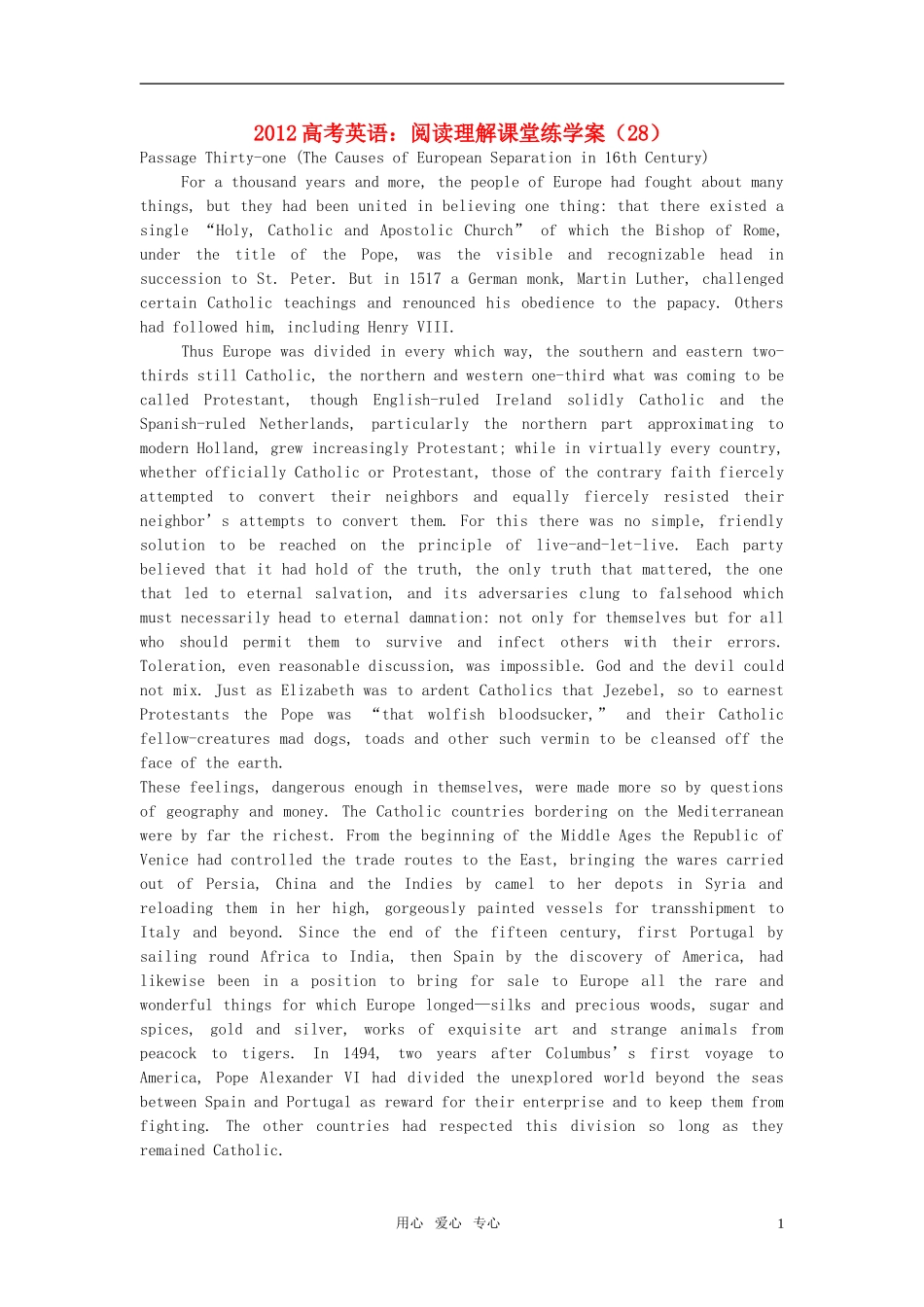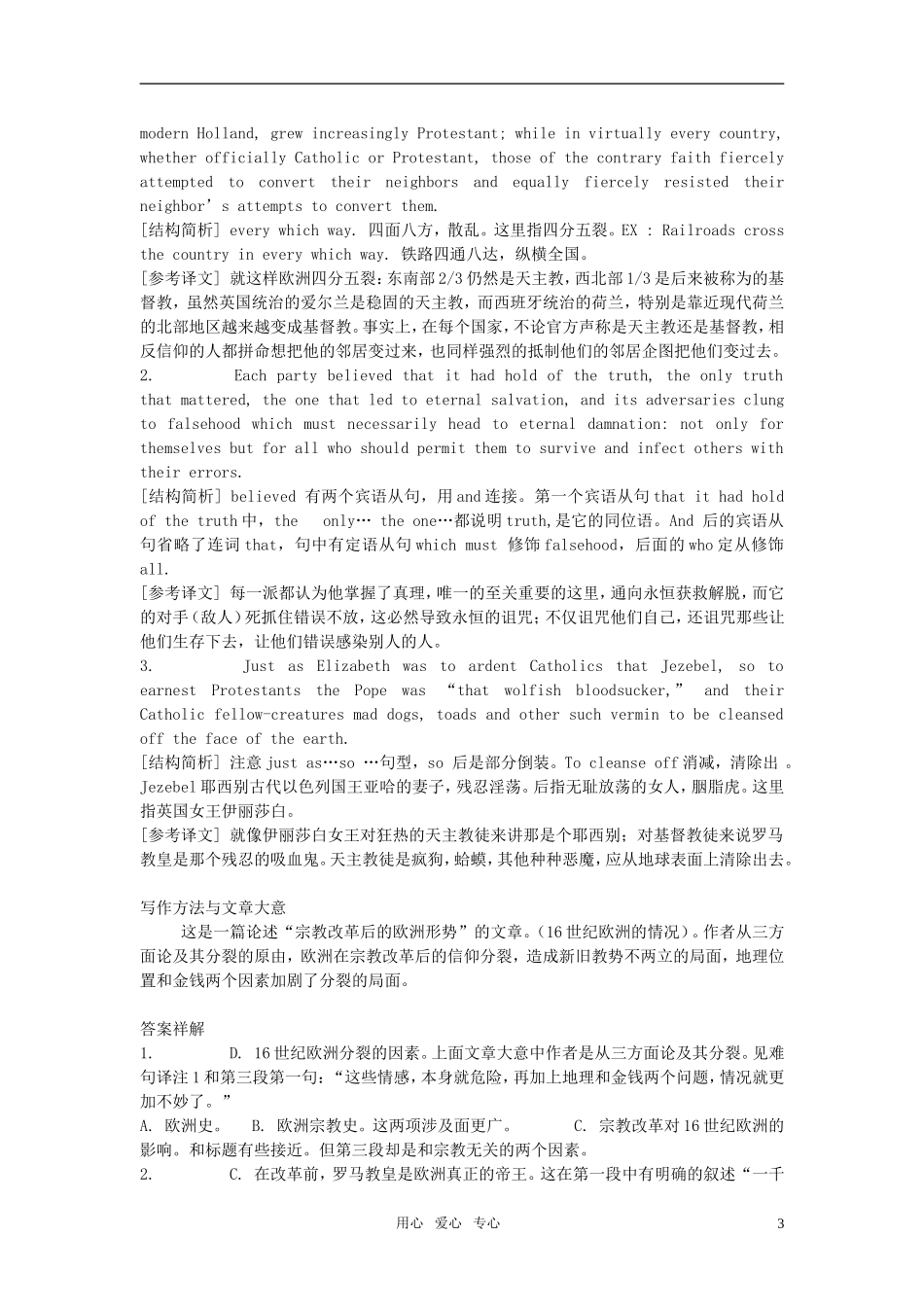2012 高考英语:阅读理解课堂练学案(28)Passage Thirty-one (The Causes of European Separation in 16th Century) For a thousand years and more, the people of Europe had fought about many things, but they had been united in believing one thing: that there existed a single “Holy, Catholic and Apostolic Church” of which the Bishop of Rome, under the title of the Pope, was the visible and recognizable head in succession to St. Peter. But in 1517 a German monk, Martin Luther, challenged certain Catholic teachings and renounced his obedience to the papacy. Others had followed him, including Henry VIII. Thus Europe was divided in every which way, the southern and eastern two-thirds still Catholic, the northern and western one-third what was coming to be called Protestant, though English-ruled Ireland solidly Catholic and the Spanish-ruled Netherlands, particularly the northern part approximating to modern Holland, grew increasingly Protestant; while in virtually every country, whether officially Catholic or Protestant, those of the contrary faith fiercely attempted to convert their neighbors and equally fiercely resisted their neighbor’s attempts to convert them. For this there was no simple, friendly solution to be reached on the principle of live-and-let-live. Each party believed that it had hold of the truth, the only truth that mattered, the one that led to eternal salvation, and its adversaries clung to falsehood which must necessarily head to eternal damnation: not only for themselves but for all who should permit them to survive and infect others with their errors. Toleration, even reasonable discussion, was impossible. God and the devil could not mix. Just as Elizabeth was to ardent Catholics that Jezebe...


